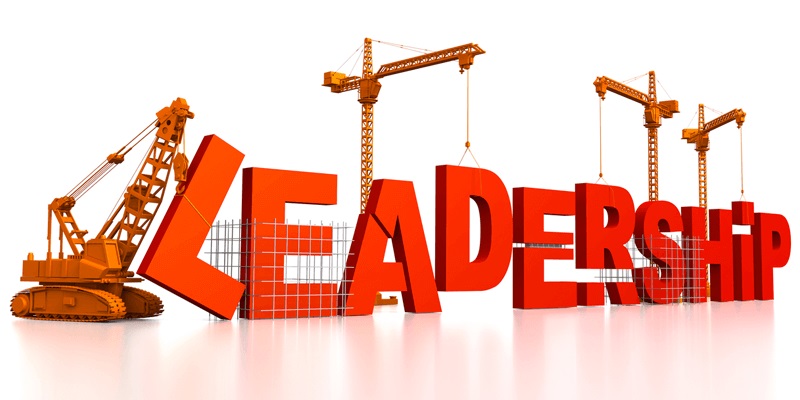
Now more than ever before, leaders all over the world are facing change and complexity — the coronavirus pandemic has presented us all with new challenges, new circumstances, and new uncertainties. Adaptability is a requirement. Because change is constant and inevitable, leaders must be flexible to succeed. Adaptability is about having ready access to a range of behaviours that enable leaders to shift and experiment as things change.
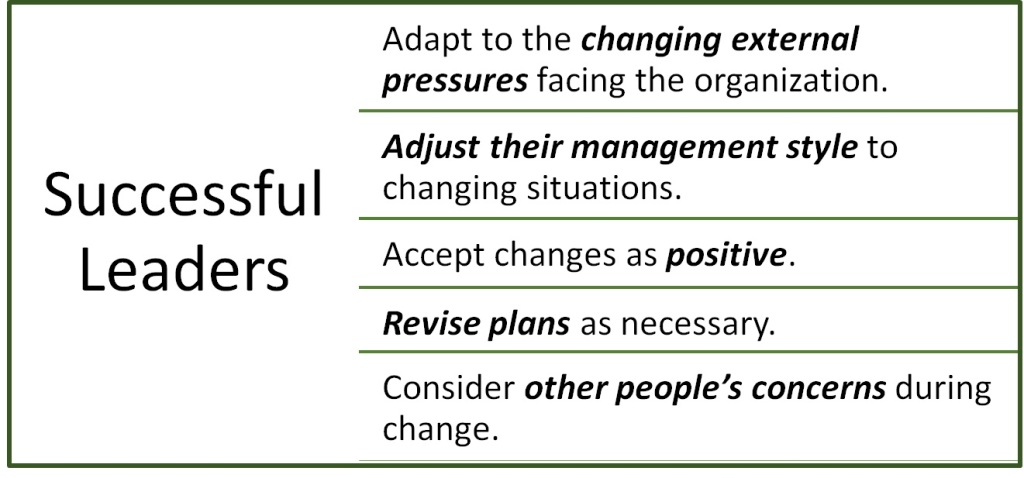
Conversely, it may also be argued that inflexible leaders limit the adaptability of others. New initiatives may be halted or stifled. Resistance to change may undermine critical projects or system-wide implementation. Employee enthusiasm, cooperation, morale, and creativity are jeopardized, making it all the more difficult to run the business or organization.
Am I a Flexible Leader?
Consider our personal approach to change. How do we respond when facing change??->
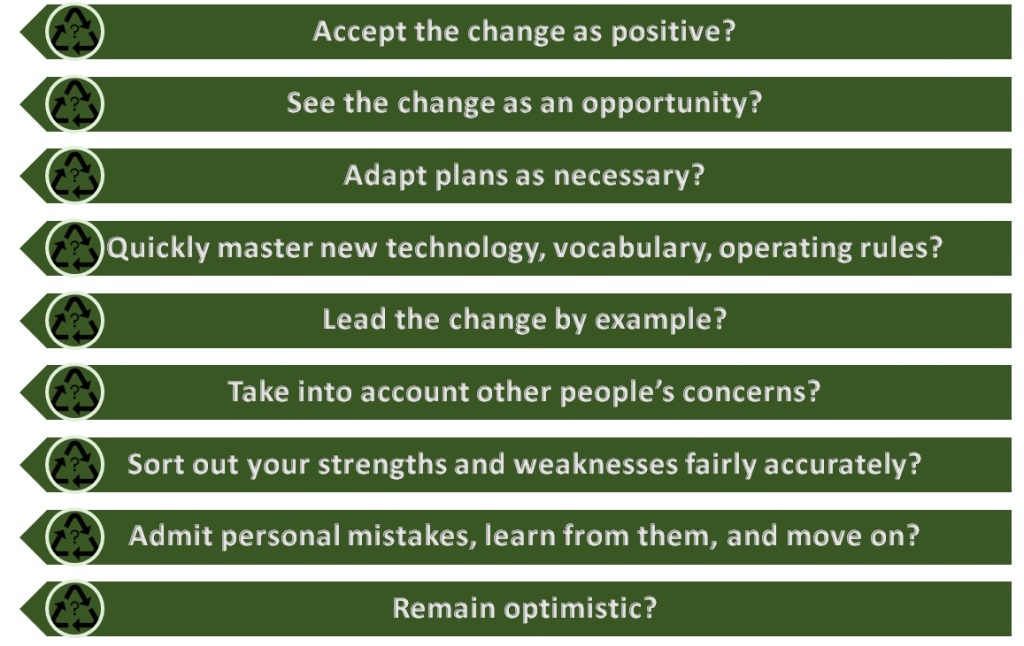
If few or none of these responses describes us, we are not alone. Many of us get stuck, have a hard time letting go, or simply don’t know how to proceed in unknown territory.
The 3 Types of Flexibility That Help You Adapt to Change
We need to practice the 3 components of adaptability: cognitive flexibility, emotional flexibility and dispositional flexibility.
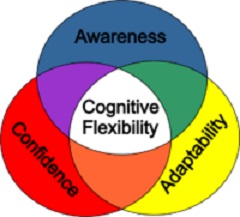
A) Cognitive flexibility — the ability to use different thinking strategies and mental frameworks:. . . . Leaders who have cognitive flexibility are able to incorporate different thinking strategies and mental frameworks into their planning, decision-making, and management of day-to-day work. They can simultaneously hold multiple scenarios in mind and can see when to shift and inject a change. Cognitive flexibility indicates nimble, divergent thinking, an interest in developing new approaches, the ability to see and leverage new connections, and the propensity to work well across the organization. These leaders readily learn from experience and recognize when old approaches don’t work.
B) Emotional flexibility — the ability to vary one’s approach to dealing with emotions and those of others: . . . . . Leaders with emotional flexibility vary their approach to dealing with their own and others’ emotions — an area that many leaders often fail to consider. An emotionally flexible leader is comfortable with the process of transition, including grieving, complaining, and resistance. Adapting to change requires give and take between the leader and those experiencing the change. A leader without emotional flexibility is dismissive of others’ concerns and emotions and shuts down discussion. At the same time, an emotionally adaptive leader moves the change or agenda forward.
C) Dispositional flexibility — the ability to remain optimistic and, at the same time, realistic: . . . . . Leaders who display dispositional flexibility (or personality-related flexibility) operate from a place of optimism grounded in realism and openness. They will acknowledge a bad situation but simultaneously visualize a better future. They are neither blindly positive nor pessimistic and defeatist. Ambiguity is well-tolerated. Dispositionally flexible leaders see change as an opportunity rather than as a threat or danger. By learning and practicing behaviors that boost your cognitive, emotional, and dispositional flexibility, you can become more adaptable and, in turn, help others to adapt.
Cognitive Flexibility: Meaning & Ways to develop
Cognitive flexibility refers to our ability to disengage from one task and respond to another or think about multiple concepts at the same time. Someone who is cognitively flexible will be able to learn more quickly, solve problems more creatively, and adapt and respond to new situations more effectively, which is why it’s so important in both educational settings and the workplace. Building your cognitive flexibility is a great way to develop professionally and keep up with the ever-changing work environment of the future. Some ways in which this can be done are:
A) Alter our everyday routine: . . . . . For instance, if we are accustomed to taking the same route to work each day, look for a different route or consider taking the bus instead of driving ourselves. If you usually get your exercise at the gym, change things up by running in the park or going for a bike ride. Even making the smallest of changes like sitting at a new spot at the dinner table or using our left hand to brush our teeth instead of our right can help us build and strengthen new neural pathways.
B) Seek out new experiences: . . . . . Each time we experience something out of the ordinary or learn something new, the brain creates new synaptic connections. New and interesting experiences have also been shown to trigger the release of dopamine, which not only increases motivation but also enhances memory and learning. So going out of our way to experience new things or engage in novel activities can go a long way towards helping us develop cognitive flexibility. This might mean travelling to another country or volunteering in a new industry, but it could also take the form of activities like learning a new language or musical instrument, taking a dance class, or even exploring a part of town we are not familiar with.
C) Practice thinking creatively: . . . . . . Another way to build cognitive flexibility is to make an effort to think in unconventional and creative ways or practice divergent thinking. Divergent thinking usually occurs in a spontaneous and free-flowing manner and involves thinking in terms of unlimited possibilities rather than a limited set of choices.
D) Don’t always take the easy way: . . . . . . . These days we have technology and apps that make our lives easier in countless ways, from spell check and autocorrect to GPS. But the truth is that making things easier for ourselves isn’t always the best thing for our cognitive flexibility. Research shows that introducing so-called “desirable difficulties” can lead to deeper learning, so by making a point of not always choosing the easiest way of doing things, we can keep our mind sharp and even learn through our everyday experiences. For instance, if you’re driving to an area you’re not familiar with, try to navigate your way using a map and asking for directions rather than using your GPS, or instead of reaching for your phone the minute you need to make a calculation, grab a pen and paper, and do it the old-fashioned way.
E) Go out of our way to meet new people: . . . . . Meeting people from different cultures and walks of life whose perspectives and viewpoints are likely to differ from our own can help us to be less rigid in our way of thinking and accept that there may be more than one “right” way of looking at things. Research shows that people who are exposed to situations that challenge their ideas about what’s right and wrong tend to have greater cognitive flexibility. So make an effort to meet people outside of our normal social circles, whether that means travelling abroad, volunteering, teaching, or connecting with people through social media.
F) Transfer our learning: . . . . . Learning to transfer what we have learned in one context into a new context can be a great exercise in cognitive flexibility, because it forces us to form new connections between previously unconnected networks of knowledge and think more creatively. Without the ability to transfer skills and knowledge to new contexts, our learning won’t have as great an impact. If we want to develop our ability to transfer knowledge, research shows that explaining a new concept in our own words not only helps us identify any incorrect assumptions, but also helps us to generalise a concept for future application. Once we are sure we understand the concept, we can look for ways to apply it in real-world situations.
G) Challenge our morals: . . . . . . Seeking out experiences that test our morals and expose us to a variety of beliefs, values, and expectations can give us a better understanding of culturally different perspectives and help us become more flexible in our thinking. Even if we don’t necessarily agree with someone’s point of view or belief system, being cognitively flexible means we will be able to think about why they might see things that way and understand their point of view. This ability will make it easier for us to communicate with people, resolve conflicts, and adapt your thinking to various situations. Of course, travel is one way to challenge our way of thinking, but even just reading about moral dilemmas and thinking about them critically can help us develop in this area.
Tips for Flexible Leaders
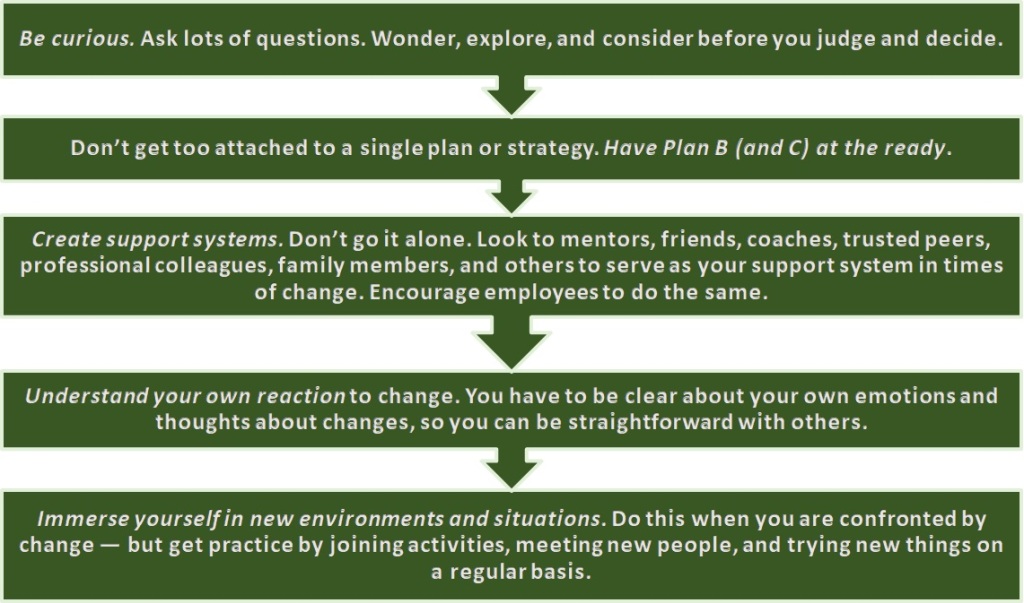
Content Curated By: Dr Shoury Kuttappa

